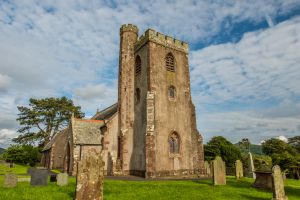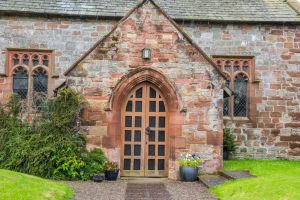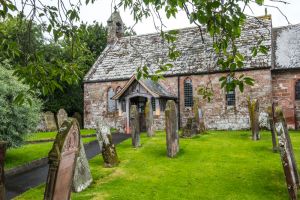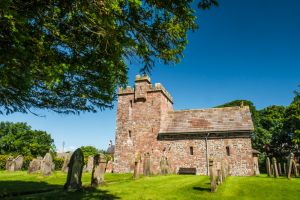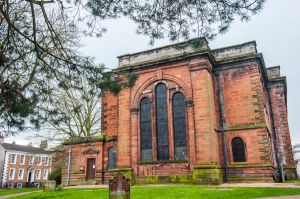Lake District Travel Guide - Historic Churches
- Map of Historic Churches in Cumbria
- Map of ALL Historic Churches in England
- Map of all attractions in Cumbria
St Paul's church stands in isolated splendour, with views up Wasdale valley to Scafell Pike and the western Lake District. The church boasts stained glass by Edward Burne-Jones and William Morris, and in the churchyard stands the 9th-century Irton Cross, carved with intricate patterns of Celtic interlace.
Holmrook, Cumbria, England, CA19 1YH
Heritage Rating: ![]() ?
?
Heritage Highlight: 9th-century Irton Cross
Nearest Self Catering Cottages
St Michael's church stands in a picturesque setting beside the River Derwent, overlooked by historic Isel Hall. The church is 12th century, with a Norman doorway and chancel arch, and boasts two pieces of a late Celtic cross shaft.
Isel, Cumbria, England, CA130QG
Heritage Rating: ![]() ?
?
Heritage Highlight: Celtic carved cross shaft pieces
Nearest Self Catering Cottages
St Peter's Church dates to AD 1194 and features two Norman doorways, a 12th-century chancel arch with a carving of a Green Man, and an inscribed Roman stone brought here from Hadrian's Wall. Look for the leper's squint set in the wall, so that lepers could watch Mass without entering the church.
B5307, Kirkbampton, Cumbria, England, CA5 6JB
Heritage Rating: ![]() ?
?
Heritage Highlight: Roman carved stone from Hadrian's Wall
Nearest Self Catering Cottages
St Bride's church dates to the 12th century and stands atop a Roman fort. The church boasts a Norman chancel arch and an ornately carved 14th-century font. Look for the memorial to 6 children of the curate, who tragically died of smallpox in 1745.
Church Road, Kirkbride, Cumbria, England, CA7 5HR
Heritage Rating: ![]() ?
?
Nearest Self Catering Cottages
This attractive church of red sandstone is the second largest in Cumbria (after Kendal) and is referred to locally as the Cathedral of the Dales. The first church on this spot was built during the late Saxon period. This was replaced by a Norman church in 1170, and by the current building around 1220.
Kirkby Stephen, Eden Valley, Cumbria, England
Heritage Rating: ![]() ?
?
Heritage Highlight: The Loki Stone, carved with the figure of the Norse God Loki
Nearest Self Catering Cottages
St George's Church was built from 1874 to serve Millom's growing population. Highlights include the grave of poet Norman Nicholson, a Millom native, and a memorial window in his honour. There is very good 19th-century stained glass and a Boer War memorial in the style of a Celtic cross.
St George's Road, Millom, Cumbria, England, LA18 4JE
Heritage Rating: ![]() ?
?
Heritage Highlight: Poet Norman Nicholson's grave
Nearest Self Catering Cottages
St Lawrence church in the village of Morland is the only church in Cumbria with a Saxon tower. The tower served as a place of refuge from raiders and could only be accessed through a noarrow barred door from the nave. Other features include 14th century carved heads on a chapel screen and a 1648 poor box.
Church Lane, Morland, Cumbria, England, CA10 3AZ
Heritage Rating: ![]() ?
?
Heritage Highlight: Saxon west tower
Nearest Self Catering Cottages
A 12th-century church heavily rebuilt in the 16th century. Look for memorials to the Penningtons of Muncaster Castle, a 15th-century bell made to mark the visit of Henry VI, and a Saxon cross in the churchyard.
A595, Muncaster, Cumbria, England, CA18 1RJ
Heritage Rating: ![]() ?
?
Heritage Highlight: 15th-century bell and Saxon cross
Nearest Self Catering Cottages
Newton Arlosh church dates to the 14th century and was built by the monks of Holme Cultram Abbey for their tenants. The church boasts a fortified west tower that acted as a place of refuge during border raids, with arrow slits in the walls and a vaulted ground floor chamber.
B5307, Newton Arlosh, Cumbria, England, CA7 5ET
Heritage Rating: ![]() ?
?
Heritage Highlight: One of the last few fortified churches in northern England
Nearest Self Catering Cottages
The parish church of St Andrews in Penrith is an intriguing mix of old and new. There was a church on this site as early as the 12th century, but that Norman building was largely rebuilt in 1720 by architect Nicholas Hawksmoor, who modelled his new creation on St Andrew's church in Holborn, London.
Stricklandgate, Penrith, Cumbria, England
Heritage Rating: ![]() ?
?
Heritage Highlight: 10th century crosses and hogback graves
Nearest Self Catering Cottages
